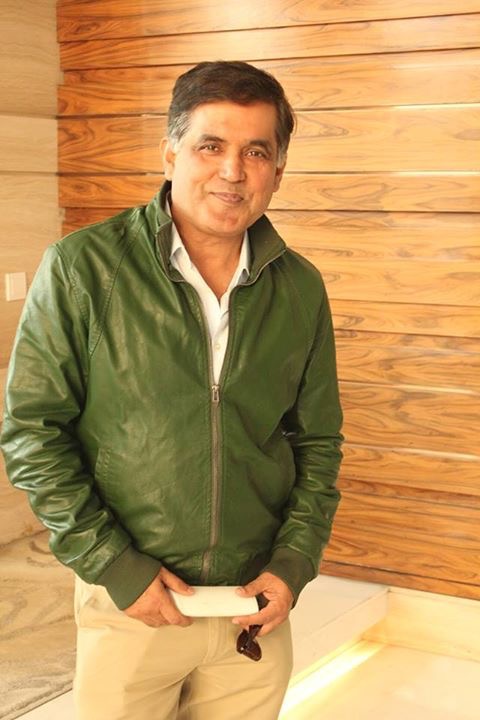(This is a reprint from NewsBred)
Swami Dayanand Saraswati, whose death anniversary falls this
week (October 30, 1883), deserves attention from all Indians. If Mahatma Gandhi
is "Father of the Nation", Swamiji has been called "The Grandfather of the
Nation" by no less than a Speaker of our Parliament 1;
President Radhakrishnan termed him the "Maker of Modern India"; Swami
Vivekananda was inclined to place him alongside Kabir, Nanak and Chaitanya for ensuring
Hindus weren't wiped out in their own homeland 2.
A man as towering as Adi Sankaracharya himself 3; he
is credited to have laid the real foundation of modern independent India 4; who went
farther than "Brahmo Samaj and even Ramakrishna Mission," as per se Romain
Rolland 5.
To Sri Aurobindo, he's been "A Soldier of Light" to the land we call Bharat or
A piece is hardly enough to encompass a man who needs a shelf-full of books to do justice to him. He believed in ancient Vedas and not Vedanta; was a Hindu without Hinduism. He wanted the living beings of this land to return to roots of Vedas and side-step Upanishads, Puranas, Idolatry and was critical of Brahmins for not disseminating Vedas' profundity to masses. Such a man can't be expected to be reverential to Islam or Christianity and he wasn't. In no way, it implied religious intolerance--rather he wanted the entire humanity to drink from this fountain of eternal wisdom called Vedas. The greatest of all Sanskrit scholars, Swamiji chose to reach out to masses in their own language of Hindi with his magnum opus, Satyarth Prakash (The Light of Truth).
So reams could be written and hours be spent in marvelling
how a young boy ran away from his home at 14, never to return or see his family
again, spending a quarter of a century as a wandering ascetic, and devoting his
entire celibate life in uplifting widows, untouchables and orphans and
regenerating the Hindu society. He was the first to give call for Swaraj in 1876, "
It is one of history's painful irony that two men who lit
the light of
First, it's no help if we pigeon-hole these two giants in social, religious or political boxes. Those who try to run down Arya Samaj for its unswerving loyalty to Vedas, are worth being reminded that a few of the greatest Indians in freedom struggle like Lala Lajpat Rai, Bhagat Singh, Veer Savarkar, Madanlal Dhingra and Ram Prasad Bismal were shaped by Arya Samaj philosophy. Men like Swami Shraddhanand and Bhai Parmanand were martyred and Swami Dayanand himself was poisoned.
In 1912, a special committee under the chairmanship of Nehru, surveyed all the jails of the country and reported that 70% of its inmates were Arya Samajis. In 1931, that figure rose to 80%. The great historian K.M. Pannikar credited 80% of all freedom-fighters as being inspired by Arya Samaj.
This fervour wasn't limited to
This all flowed from Swami Dayanand's philosophy of
overturning the alien rule. He recognized the influence of education in
regeneration of the Hindu race. The clarion call emanated from DAV College of
Lahore and the Gurukul Kangri and between 1886-1918, the Arya Samaj ran over
500 educational institutions throughout
All these institutions included the idea of Swadeshi in their curriculum. He mobilized Rajas and Maharajas in this regard. Under his influence, the Maharaja of Jodhpur and all his officials began using hand-spun and hand-woven clothes. All adopted Khadi produced in Marwar. All of these were independent of any governmental assistance. Significantly, military training was made compulsory. One of his critic Valentine Chirol said: --the whole drift of Dayananda's teachings is far less to reform Hinduism than to range it into active resistance to the alien influence which threatened, in his opinion, to denationalize it 8."
By the advent of Mahatama Gandhi in
Gandhi was an early recipient of Arya Samaj's largesse when he
received funds for his struggle against apartheid in
When Gandhi was praised for his Satyagraha in
In the spirit of those times, Swami Shradanand soon joined
Congress, moved by Gandhi's call that "dharmic aims alone can transform the
political field, (leading to pure and true amelioration of
No sooner had Swami Shradanand joined Congress, he began
seeing the futility of his decision. Ironically, his biggest heart-ache came on
the matter of Untouchability. Swami Shraddanand was convinced that seven crores
of Indians can't be allowed to stay out of freedom struggle only because they
were Untouchables. He feared they were ready pickings for Christian
missionaries. Despite Gandhi's avowed stance against Untouchability, he
received no support from Congress on the matter. His proposals were rejected by
Congress in its 1920
Gandhi was completely taken in by his mission to forge a
Hindu-Muslim unity. Gandhi's support to Khilafat Movement, a movement to
restore Ottoman Sultan and Caliphate in
faraway Turkey--in order to gain Muslim support--and the subsequent Moplah riots
in which thousands of Hindus were butchered and about which the apostle of
non-violence never offered any criticism, stung Swami Shradhanand. He also
found to his dismay that Gandhi was forming committee on various issues and
then taking arbitrary decisions. He
lamented: "I thought it would be a misfortune if Mahatmaji would be obliged to
sever his connection with the oldest political movement (Arya Samaj) in
(Note: You can view every article as one long page if you sign up as an Advocate Member, or higher).





